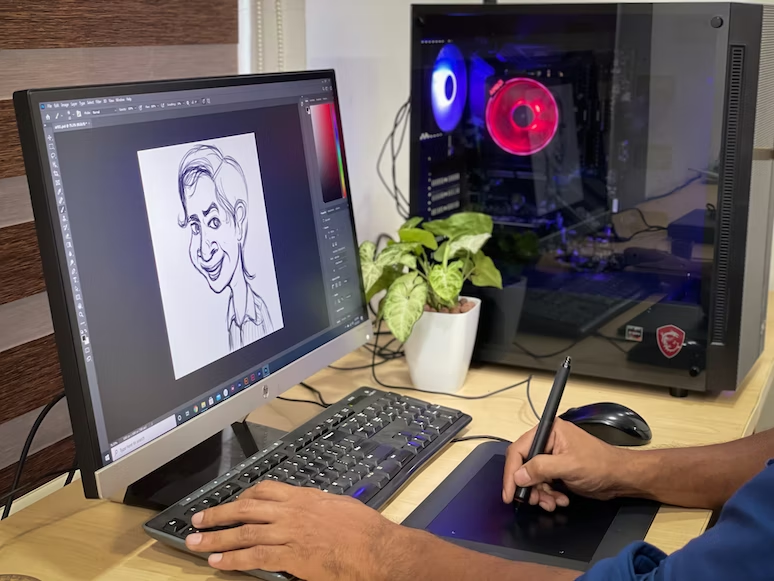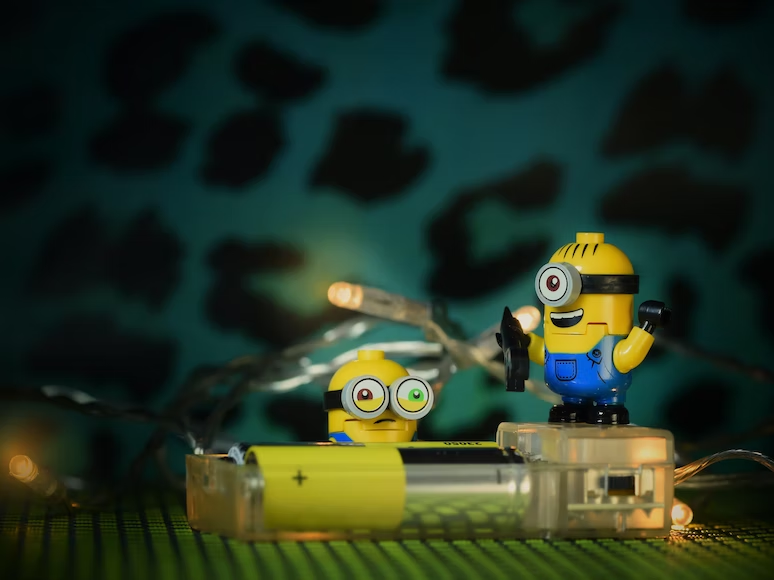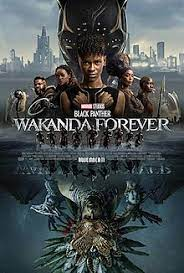Animators are digital artists who make designs or models that simulate movement in a sequence, frequently conveying a story or offering information. Consider this career option if you appreciate creating innovative art and want to work in the media or advertising industries. Understanding the skills and qualifications needed to enter the animation industry will help you make a better-educated career choice.

This post will explain what an animator is, the position’s typical responsibilities, the steps you may take to become an animator, and much more!
Who Is An Animator?
Animators create sketches and designs for various digital media assets, such as video games, animation films, advertisements, and television shows. They are responsible for building two-dimensional (2D) or three-dimensional (3D) graphics and structures that appear to move. They are also known as digital animators or motion cartoonists.
These experts may specialize in specific animation fields and genres, such as designing cartoon characters or producing stop-motion films. While animators can draw their ideas by hand, today’s professionals frequently work using computer tools.

Animation is closely tied to filmmaking and, like filmmaking, is exceedingly labor-intensive. Therefore, most notable works necessitate the collaboration of several animators. The methods used to create the visuals or frames for an animation piece are determined by the creators’ artistic styles and the field in which they work.
Examples of artists that contribute to animated cartoons but are not animators (who paint the “scenery”) are:
- Layout designers (who design the settings, lighting, and camera shots)
- Storyboard artists (who create panels of action from the script)
- Background artists
Layout Design for Animation – Part 1
Inside Sony Pictures Animation – Storyboard Artist Patrick Harpin
What Goes into the Background Art (in Anime)?
So let us understand every skill and characteristic that an animator should have and what they do!
What Is the Role of an Animator?
Animators frequently collaborate as part of a creative team on animation production. Their everyday activities may differ based on their specialization, such as developing characters for video games or artwork for animated films or commercials. Regardless of their profession, animators often do the following tasks:

- Using imagination to transmit or tell a tale and offer content in a visual way.
- Creating basic concepts and refining them with input from the creative or marketing departments.
- Creating computer-generated visuals and designing 3D characters (CGI).
- Creating animations with animation techniques and software.
- Collaborate with directors, producers, writers, and other animators to create actions, plot points, character attributes, settings, and other story components.
- Draft and design prototypes of new items and categories.
- Creating concept sketches for clients by conceptualizing and exploring concepts.
- Bringing the finished animation design to the customer for approval.
- Following the lead animator’s or manager’s instructions.
The REALITY OF BEING AN ANIMATOR
Careers in Animation
Animation artists play a variety of roles in a project. Whether they stay in one job for years or switch around to complete a project, the parts are as exciting and different as the artists themselves. Let’s have a look at some of the jobs below.

Animator
This is the most prominent role in animation: professionals who draw image after image of a character’s or a scene’s movement. There is also a hierarchy of animators, beginning with the Animation Staff and progressing to the Key Animators, Senior and Supervising Animators, and lastly, the Art Directors. Each role entails a combination of animation and gradually greater responsibility for supervising others beneath them.
So You Want To Be an Animator – Building Your Career – Extra Credits
Character Animator
We’re highlighting this profession specifically since character animators either work on a specific character throughout production or are part of the team that handles the animation of figures within a scene. There are many animated pieces within an animated film or short; Character Animators would be mostly, if not solely, responsible for the story’s characters vs. the elements around them. For example, consider animating Mickey Mouse-like a tree moving in the wind behind him. Other performers would fill such positions.
Getting Started in Adobe Character Animator
Character and Prop Design
These artists create the animation production’s characters, props, and scene components. This is often a concept art role, and other times it requires more polished drawings and ideas to give off animators. In addition, these designers collaborate with other team members to ensure that designs are coherent in tone and content for production.
01/04 The Basics of Prop Design — Illustration: Learn about Prop Design_ENG
Clean-up Artist
A Clean-up Artist takes the rough animation of the animator next to them and tidies up the linework so that it is ready for color grading and other artists on the production line. Furthermore, clean-up artists may be required to prepare turn-around sheets and supplementary art to cover the gaps in the animators’ additional drawings. This function may be all an artist does on a project at times, but it may also be handled by interns or one of several hats that an artist wears during execution.
Inbetweeners
Inbetweeners are animators who handle all of the images between the frames created by the Key Animator. Being more senior in position, Key Animators must move on in generating a scene rather than reaching the correct frame rate from motion to move to keep things moving within a production. Inbetweeners exist to ensure that each movement flows into the following significant frame.
SBW – The art of Inbetweening: Timing Charts
Modelers and Riggers
These artists, as well as others in related roles, prepare character ideas and concepts for animation. 3D Modelers use animation technology to make a digital sculpture from a design. Riggers add a digital skeleton and many points of flexibility to that model so that animators can move it to animate it. Build Team artists are also included in this category of artists that create artwork in advance for animation.
rigging and animating made it super easy
Storyboarders
Storyboarders create the setting. Then, he will draw out the scene’s designs from the narrative, offering everybody else animators—the direction in converting the script to visual media. It’s worth noting that such a job title can also be seen in live-action films and advertising.
Into the Unknown (From “Frozen 2″/Storyboard to Final Frame Version)
Background Artist
Also known as a Color Key Artist, the background artist is responsible for developing the overall color scheme of a scene or project. They concentrate on beautiful art, frequently painting or producing static backdrops for animated characters to inhabit.
Digital Painting Lighting and Color Keys
Art Director/Director
Art Director and Director are the most senior members of the animation team. Based on the production, there may be managers and directors above the art director, so anyone with this position will be responsible for managing all of the artists below them and organizing their duties, deadlines, and more inside a project. For the sake of this post, we’ll concentrate on the roles below directors, but knowing where the staircase might lead is extremely valuable.
Many of these jobs may have different or additional obligations demanded of each artist, depending on the sort of show. However, most of these positions are filled whether the project is traditional, digital, or 3D animation. Furthermore, there are a plethora of others that I haven’t mentioned yet (lighting, textures, editing, etc.).
Teamwork is essential in animation productions. Regardless of team size, everyone contributes to the common aim of finishing the project. When watching an animated production, pay attention to how long the titles are and each job’s role in getting a sense of what those individuals accomplished to bring unique stories to life.
Interview with Lindsey Olivares
Animators’ Working Environment
Animation is a specialized profession that allows you to work for various companies in the media and entertainment industries. For example, animators can work in film and tv production houses, game consoles and digital media companies, special effects talent agencies, marketing agencies, and specialized animation studios.

This position often entails working full-time in an office setting for approximately 8 hours a day or 40 hours per week. These organizations may offer you a dedicated workstation with the necessary gear and software to finish your animation chores.
You can also work as a contractor or freelancer as an animator. This option allows you to collaborate with various customers and businesses frequently on a project-by-project basis. It can also give you more freedom in your schedule by choosing which projects to work on and when.
How To Become An Animator?
If you want to become an animator, the steps below can help you get started:

1. Finish your High School
Passing your higher secondary in any field is the minimum qualification for entering a bachelor’s or diploma study in animation. Most animation courses require a specific proportion of marks to be obtained. When deciding whatever course or program to undertake, meet the college’s eligibility standards. Learn about the various animation software or resources you may need in the future to boost your chances of approval.
2. Pursue a bachelor’s degree
Most employers prefer people who have a bachelor’s degree or diploma in animation, visual arts, multimedia, or a similar subject. These programs teach animators drawing, sketching, purposeful character design, modeling, motion mechanics, and animated film creation, among other things. In addition, some courses may include filmmaking or storytelling instruction to help you comprehend the complete creative process.
Several three-year degree programs are available, including a Bachelor of Arts or a Bachelor of Science in animation and multimedia, graphic design, filmmaking, and related subjects. You can also pursue a Bachelor of Visual Arts or a Bachelor of Fine Arts degree. In addition, the diploma courses cover 2D animation, 3D animation, filming, digital animation, visual effects (VFX), and other related topics. A diploma course might last anything from six months to a year.
3. Carry out an internship
Interning with an experienced animator or a firm that provides animation services allows you to understand the daily tasks of the work and obtain the necessary skills. As a student or recent graduate, you can look for internships. Employers prefer candidates with professional experience. Thus, an internship demonstrates that you are already familiar with and capable of performing the job’s duties. Internships also allow you to meet other animation or creatives who offer career advice or link you to professional opportunities. You can also earn expertise by working as a freelance animator, volunteering, or entering online animation contests.
4. Make a portfolio
Creating a digital portfolio of your animation work can assist you in showcasing your knowledge, talents, and expertise to potential employers. When possible, develop demo reels to set yourself apart from other prospects. You may include projects from your bachelor’s or master’s degree programs and work accomplished during internships and different positions in your portfolio. When applying for jobs, personalize your portfolio to the specifications or preferences of each organization. For example, if you’re searching for a job at a video game company, you might need to focus your portfolio on the 3D animations you’ve developed.
How to Build a Portfolio – a Guide for Animators!
5. Get a master’s degree
While master’s degrees are not necessary for entry-level animator positions, senior-level positions may prefer applicants with master’s degrees. After completing your undergraduate degree or gaining some professional experience, you can pursue a master’s degree. Seek out master’s degree programs in animation and other relevant fields. This degree allows you to demonstrate your professional animation or artistic skills and knowledge. Both private and public schools offer these courses, and the admissions process differs by institution. Some may hold an entrance exam, while others may admit applicants following an interview process.
6. Enhance your abilities
The animation industry evolves quickly, frequently due to new technology advancements. To preserve your expertise and grow your profession, you must stay informed of such changes and constantly refresh your skillset. For example, if you’re learning a new design tool, practice it every day to better understand it. Joining professional organizations or monitoring industry news sources might help you keep informed. You might also think about attending formal courses to develop your technical and soft skills, which employers frequently give directly.
Some companies also provide work shadowing opportunities, which allow you to learn about various occupations that may interest you. For example, assisting a senior animator at your workplace may teach you about their more advanced tasks, such as project and team leadership.
Essential skills for animators
Animators must have a wide range of technical abilities to do their profession, frequently acquired through formal training and education. Depending on their work, they may be required to utilize specific design programs and software and execute specialized activities such as 3D modeling or interaction design. These professions also benefit from a variety of soft skills, which include:

Creativity
Animators use their imagination and artistic ability to create original characters or visuals for films, video games, and other media. When working as part of a team, they frequently convert the ideas of their colleagues into relevant or creative designs that interest the audience. These professionals’ creative talents also allow them to experiment with numerous artistic styles and approaches to produce exceptional or novel results.
MINIONS | Go behind the scenes and find out how they made it
Communication abilities
Animators, as previously said, frequently work as part of a team of creative experts on a project. This profession demands them to often engage with their colleagues and clients to build project or animation requirements. Animators must have active listening skills to grasp the needs of stakeholders and verbal and written communication abilities to collaborate on ideas and information effectively. These experts also seek and use input to ensure that their final designs align with the project’s aims or requirements.
Time administration
When engaging in animation projects, animators are frequently required to satisfy team or stakeholder deadlines. Time management skills guarantee animators can arrange their calendars and efficiently use their time. They may, for example, prioritize tasks throughout the day based on the needs of the project or the time it takes to accomplish a task.
Paying close attention to detail
It is critical to grasp how features such as colors, special effects, shapes, and texture affect your work and interest your audience when working as an animator. For example, animators must evaluate character design aspects to guarantee continuity in each frame. This ability assists animators in ensuring that their designs fulfill the requirements of a project or coincide with the preferences and input of stakeholders.
How Pixar’s ‘Toy Story 4’ Was Animated | Movies Insider
Why Is Animation a Good Career?
There are already many articles and forum postings debating whether animation as a career path is worthwhile. Unfortunately, many of these are negative, exaggerating the idea of an animator as a soulless shell of a human, working late at night with no socialization or time for other interests.
Yes, it’s competitive, and yes, you have to put in some effort, but that doesn’t mean you can’t do it! Regardless, we think animation is fantastic and are not afraid to say so! So, here are a few factors that prove animation is a smart career choice.
It’s exciting to learn about new topics
Animators are constantly presented with the problem of animating something they’ve never done before from project to project. So you’ve been tasked with animating a monkey – we’ve all seen a package of Coco Pops, but how do you make that creature convincingly come to life?
Google is an animator’s best mate: investigate their behavior, body language, expressions, anatomy, and everything you need to know to animate it. You’ll be a monkey expert before you know it. It’s nice for a bit of diversity in the studio, but it’s not so great when your friends become tired of hearing about monkeys.
You’re constantly learning new things
Yes, the research component of being an animator is enjoyable and different, but you also get to learn more about your profession with each new project you undertake. For small publishers where everyone has their fingers in numerous animation pies, you’ll master rigging, lighting, design, storyboarding, and other essential skills to generate video. Not only that, but you should strive to improve with each task.
Forget about scrutinizing graphs and going over quarterly revenue reports to determine whether you’re progressing and your efforts are paying off; animation allows you to take on new challenges and authentically see your success.
You will have the opportunity to work with constantly growing technology.
This is true for many professions, but in animation, your ingenuity, and imagination are continuously challenged yet supported by technological breakthroughs in a truly fantastic way.
Sure, unless you’re a significant animation buff (and there’s nothing wrong with that), the current edition of Blender or a new Wacom tablet isn’t going to blow your mind, but consider virtual and augmented reality.
Consider how your animation will be seen and engaged within a fully immersive 3D area. You’ll feel like you’re living in the future! We do, anyway. What other job allows you to work with the most interesting, emerging technology in a creative way other than animation?
Final Thoughts
As you’ve undoubtedly guessed by now, we think animation is a fantastic career choice, and we’re not alone: there’s never been a more popular way to convey your message.
There are numerous approaches to animation. You can go freelance, which, as the name implies, gives you more leeway, or you can try and join a firm for job stability and a support/progression framework.
Videos
How Much Money Animator Artists Make?















